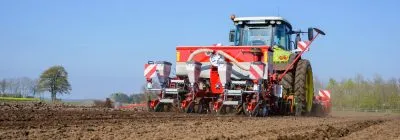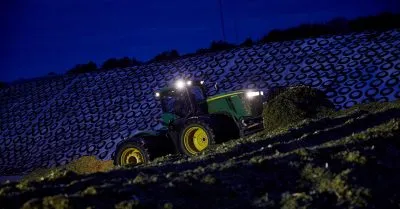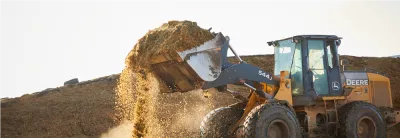Choosing the Right Winter Forage
As the main harvest season winds down, winter forage planting presents farmers with a valuable opportunity to optimize land use, enhance feed inventory, and preserve soil health. But with so many options, how do you choose the right winter forage crop?
Why Plant Winter Forage?
Planting winter forage helps you:
-
Maintain livestock nutrition during the off-season
-
Prevent soil erosion with effective cover crops
-
Improve spring yields through better ground coverage
-
Enhance soil structure and nitrogen content (especially with legumes)
Key Factors: Climate and Animal Nutritional Needs
The two most important considerations when choosing winter forage are:
1. Local Climate Conditions
- Winter forages must withstand cold temperatures and wet soil. Crops like rye and triticale are ideal for harsher climates, while oats thrive in milder winters. Consider frost tolerance, soil type, and moisture levels when planning.
2. Livestock Nutritional Requirements
Choose forage based on the Relative Feed Value (RFV) your animals need. According to the University of Minnesota Extension, these are typical RFV targets for cattle:
-
Early lactation cow: 160 RFV
-
Dairy calves, mid and late lactation cows: 140 RFV
-
Heifers (12-18 months): 120 RFV
-
Dry cows, older heifers (18-24 months): 100 RFV
RFV can vary depending on the harvest stage, so timing is crucial. For instance, rye’s feed value drops significantly after the flowering stage.
Top Winter Forage Options
Here are some of the most reliable and productive winter forage crops to consider:
A wheat-rye hybrid that thrives when planted in early fall. It’s great for light grazing, silage, or hay. High digestibility and good yields make it a favorite for many livestock producers.
Extremely cold-hardy and adaptable to acidic or sandy soils. It’s ideal for preventing soil erosion, supporting early-spring grazing, and increasing feed supply with high biomass yield. A top pick for tough climates.
These legumes work well as forage and cover crops. Crimson clover performs well in cool temperatures and can be mixed with grasses for added nutrition. Most are annuals, but perennial clover species are also suitable depending on your forage plan.
Best suited for regions with mild winters. While not highly frost-tolerant, oats make excellent early-spring hay or haylage. Their quick growth and palatability make them a great short-term forage option.
Customizing Your Winter Forage Strategy
There’s no one-size-fits-all solution in winter forage planning. Your ideal forage depends on:
-
Animal type and life stage
-
Soil health goals
-
Weather patterns and frost severity
-
Harvest timing and usage (grazing, hay, silage)
For example, if soil erosion prevention is a priority, rye offers strong cover and spring forage. If nutrient density is key, a clover–grass mix could be the right path.
Do you need help?
Whether you’re looking to balance nutrition, protect your fields, or boost yield, our Silage Experts can help create a forage plan tailored to your farm: Schedule a call with our team today.



